Cinematic Fanatic
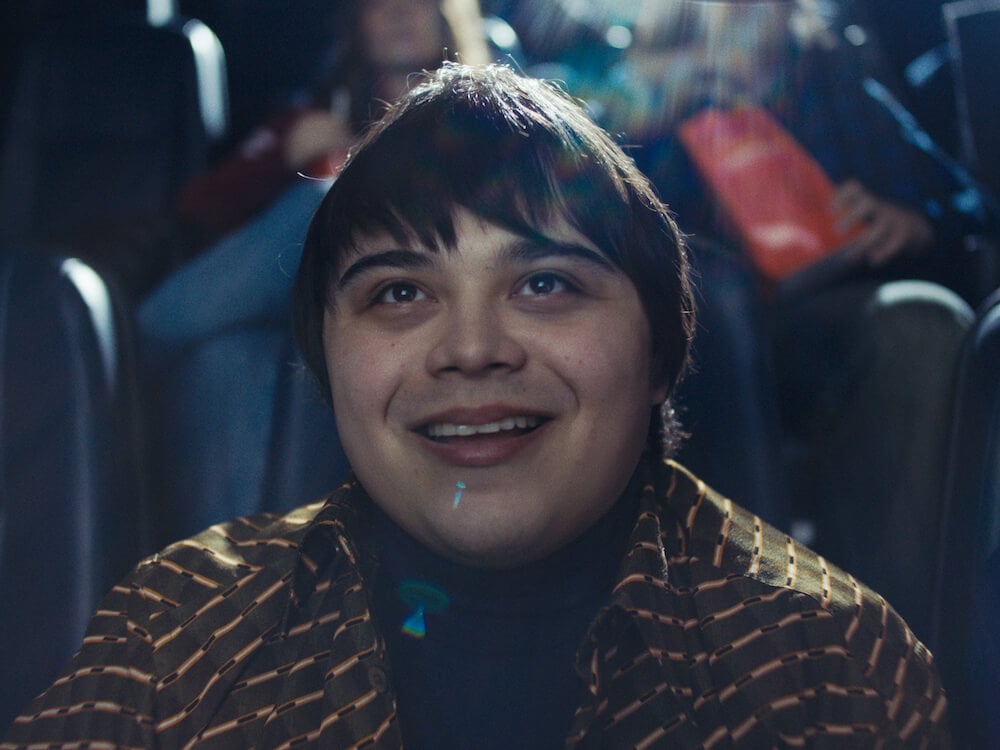
Winner of the Panavision Spirit Award for Independent Cinema at the 2023 Santa Barbara International Film Festival and the RBC Emerging Canadian Artist Award at the 2022 Calgary International Film Festival, the comedy feature I Like Movies follows the plight of a socially challenged 17-year-old who’s forced to confront the realities of adulthood while working at his local video store. Drawing inspiration from writer-director Chandler Levack’s cinematic acumen, the movie marks the feature-length debut for Levack as well as cinematographer Rico Moran. Together, the duo crafted a stylized aesthetic that underscores the perspective of the movie’s protagonist, Lawrence (played by Isaiah Lehtinen).
Panavision recently caught up with the director and cinematographer, who recount their journey to turn their visions into reality.
Panavision: How would you describe the look of I Like Movies?
Chandler Levack: ‘Southern Ontario nostalgic realness.’ We wanted to create a lot of warmth and use natural light sources from windows and lamps to highlight the environments. The movie is a period piece set in the early 2000s, in my hometown of Burlington, Ontario, so it was crucial to create a warm, nostalgic atmosphere that was still a bit stylized, paying subtle homage to the auteurs our lead protagonist, Lawrence, is obsessed with — namely Stanley Kubrick and Paul Thomas Anderson. We shot in the old Academy aspect ratio of 1.33:1, and we were rarely handheld. We wanted to create a warm sense of intimacy in the camerawork that could really highlight the blocking of the actors in the scene and the environment of the video store.
Rico Moran: We set out to make I Like Movies look at once nostalgic and modern, like the way you remember your grad-photo glossies even though they’re a bit sun-faded now. We wanted the colors to be vivid yet restrained and the framing to echo Lawrence’s narrow perspective. Chandler had chosen the 1.33:1 aspect ratio as a nod to the TVs we grew up watching movies on. It was a perfect size to frame a close-up portrait and to emphasize how Lawrence didn’t really look beyond his own little world.
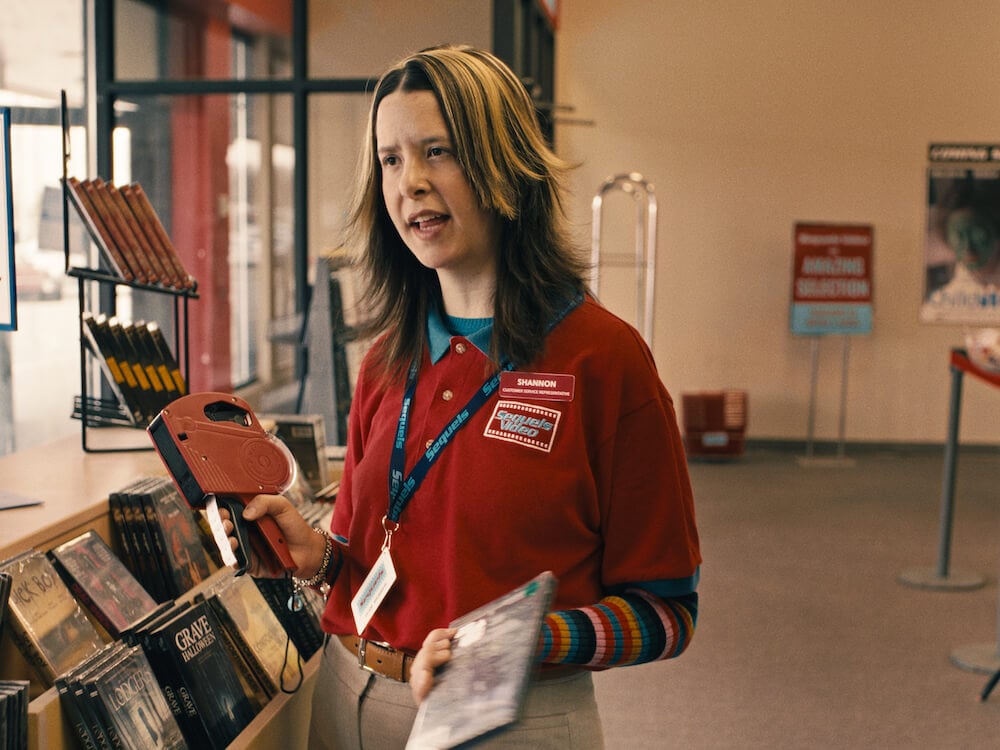
Were there any visual references you looked at for inspiration?
Levack: Rico and I created an exhaustive visual reference board for the movie, which was so fun to do. Color-palette-wise, I was obsessed with the way that Almodóvar always uses red and teal in his films. Antonio Banderas' kitchen in Pain and Glory became the inspiration for the branded scheme of our fictional video store, Sequels, which bled its way into the set dec and color scheme throughout the movie. We also watched a lot of French New Wave movies by Godard, like La Chinoise, to see how primary colors against neutral backgrounds could really pop.
All the coming-of-age movies that I revered as a teenager and today also played a pivotal role in designing our camera moves and the general vibe and lighting of the film. I think Rico got sick of how many times per day I would reference Lady Bird, but it was really a guiding light for creating an environment of stylized authenticity that remained true to a prickly protagonist's lived experience of the world. We also studied Ghost World, Rushmore and My Night at Maud's.
Moran: It was quite a range of movies we watched together to align ourselves, from Andrea Arnold to Eric Rohmer, with stops at Elephant and Marriage Story. Often there would be a specific reference point in terms of framing style, color treatment or coverage strategy, and other times it was just for a dash of fun. I was also keen on looking to photographers like Paul Graham, Hannah Starkey and Tina Barney for their vivid palettes and inspired framing.
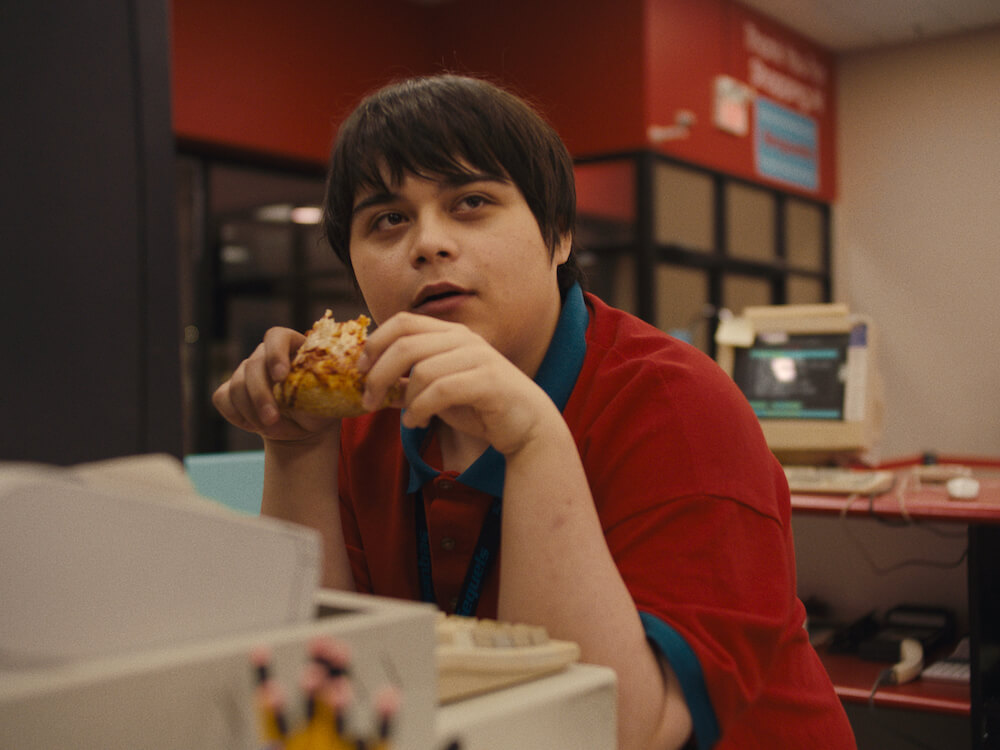
What brought you to Panavision for this project?
Moran: Panavision was always my first choice for my first feature. To be able to tell the story of our film-obsessed hero with the lenses that were used to shoot some of his favorite movies felt perfectly appropriate. I wanted to give a touch of Hollywood to the not-so-Hollywood Burlington, Ontario.
I’ve always felt so supported by Jerry Papernick, James McMahon and Johanna Gravelle at Panavision Toronto, and this project was no exception. Their team is always game to work with me and my crew to find the perfect lenses and accessories for every situation.
Levack: Panavision are the most iconic camera company in the world, and my favorite directors of all time have always shot with them. I love their lenses so much — they’re not only iconic but divine vessels of cinematic creation. I’d always dreamed of being a Panavision filmmaker. It was a shot in the dark, but I wrote Panavision a very sincere love letter expressing my desire to work with them on I Like Movies. Lawrence's heroes Paul Thomas Anderson and Stanley Kubrick have famously always shot with Panavision, so I included behind-the-scenes photos of them shooting with Panavision cameras and explained my artistic vision for the movie and the way Rico and I wanted to shoot the film. When they said yes, I teared up.
Panavision have been such generous collaborators and supporters of the project. At our U.S. premiere at the Santa Barbara International Film Festival, I Like Movies even won a juried award for Independent Cinema that included an equipment grant from Panavision. It is such a gift to know that I can continue to shoot with Panavision cameras and lenses on future projects.
.jpg?sfvrsn=6989ffa3_1)
What optical characteristics do you see in the PVintage lenses that made them the right match for I Like Movies?
Moran: During prep, Chandler and I tested different sets to determine what would be the best fit. I had a feeling that the PVintages would be the winner, and after a blind test, this was confirmed. I love their soft contrast, velvety focus roll-off, expressive but not excessive flares, and fast T-stop. We didn’t have a lot of time to light — or do anything else — so it was essential that we were able to lean into existing light levels on interior and exterior sets. The 29mm was our hero lens, perfect for a wide-angle close-up.
Levack: We also loved how the PVintage lenses were a little bit weirder than the Primos and made interesting diamond shapes out of light sources and cool lens flares. We really wanted a vintage ’70s feel for our film, [evoking] Harold and Maude and Brewster McCloud, and these lenses had that same character. When paired with the Alexa Mini, they gave our shots a filmic look with a lot of personality.
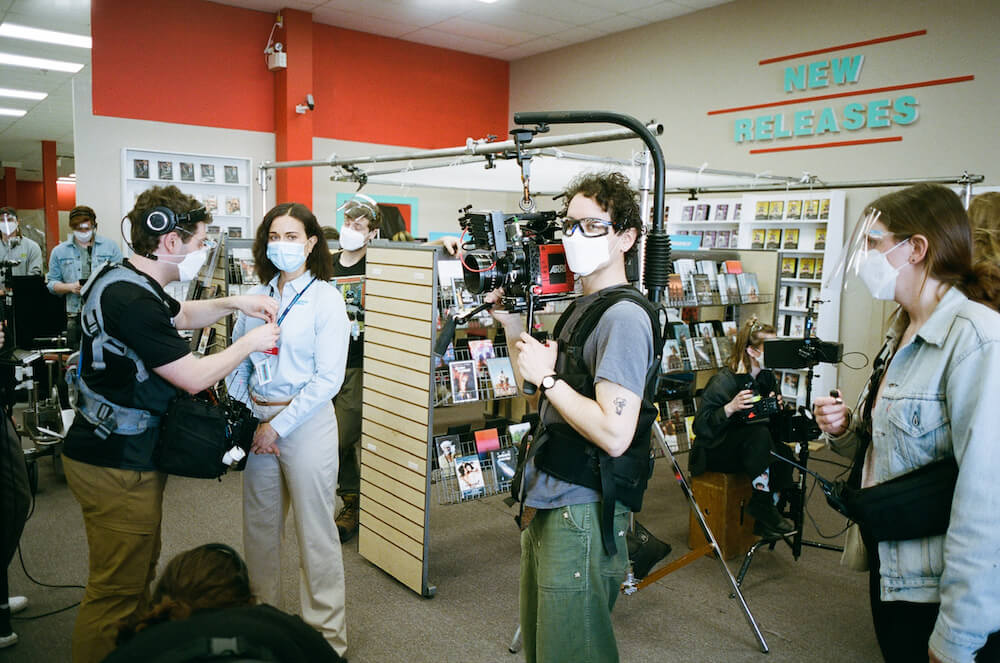
How did the two of you communicate over the course of production to ensure you were working toward the same shared vision?
Levack: We built a solid foundation in preproduction by watching a lot of movies together, speaking with our costume and production-design keys, and refining our shot list. Rico was heavily involved in location scouting, which was extremely useful, and he observed early sessions with the cast to see how we were blocking scenes in rehearsals. After that, it was pretty easy to communicate on the day because we'd already talked through so many aspects of the shoot.
There were a lot of rules in our cinematography game plan that allowed us to create a consistent look throughout. We were nearly always locked off or on a dolly, privileging Lawrence's POV. At the beginning of the movie, all the coverage is clean, but as he begins to fall apart, other characters begin to creep more into his frame and coverage; they ‘dirty’ his shots and he dirties theirs on his slow journey towards realizing other people exist.
How does this project differ from others in your career?
Levack: It's my first feature and certainly the most risky and personal film I've ever made. I feel like it's the most authentic to my voice as a comedy filmmaker and the most ambitious.
Moran: I Like Movies was my first comedy and my first feature-length film. We were blessed with Chandler’s sharp script and our cast’s layered performances, which gave us the freedom to shoot in a naturalistic style. Principal photography was just 19 days, which meant we had to move through our coverage quickly and I had to trust my gut when it came to framing and lighting. I don’t know how we could have pulled it off without our fun and supportive crew and all the incredible collaborators in other departments.
.jpeg?sfvrsn=23f2a748_1)
What inspired each of you to become a filmmaker?
Levack: At the very beginning, it was making really obnoxious and bad movies with my friends on my dad's MiniDV camera. They were total rip-offs of the films I loved and rented at Blockbuster as a teenager — Punch-Drunk Love, Pulp Fiction, The Royal Tenenbaums. Now it’s about being part of a community of amazing Canadian filmmakers who are making art in their own unique voices and on their own terms. The future is bright!
Moran: Growing up, I never even knew cinematography was an option as a career. Watching VHS movies in my parents’ basement over and over grew into an obsession, eventually evolving into a love of music videos and independent film. I started my career working in photography after a high-school course inspired me to explore image-making. Years later I joined some friends on the set of a short film and was enchanted by the way the whole crew and cast worked together and developed a tight bond over the course of production. A couple weeks later I shifted directions and started working in film.
I’m always energized by the incredible new work my peers are putting out and tapping into the energy of the broader film community at festivals and local screenings. I also love looking at the work of artists who are pushing the boundaries of their form in surprising ways. Most recently I was inspired by an exhibition of Simone Forti’s work and a stunning installation of shorts by Garrett Bradley.
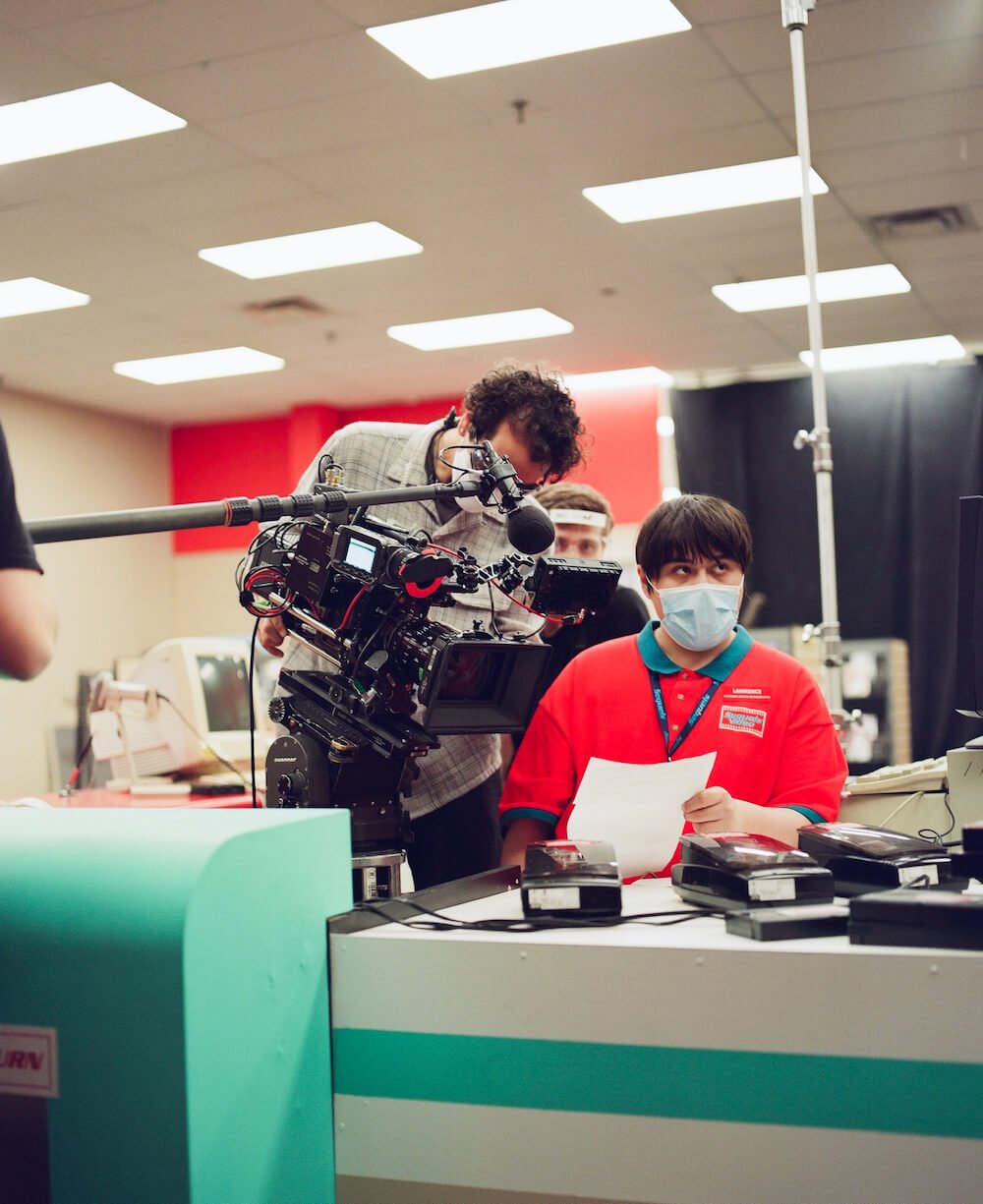
All images courtesy of the filmmakers.